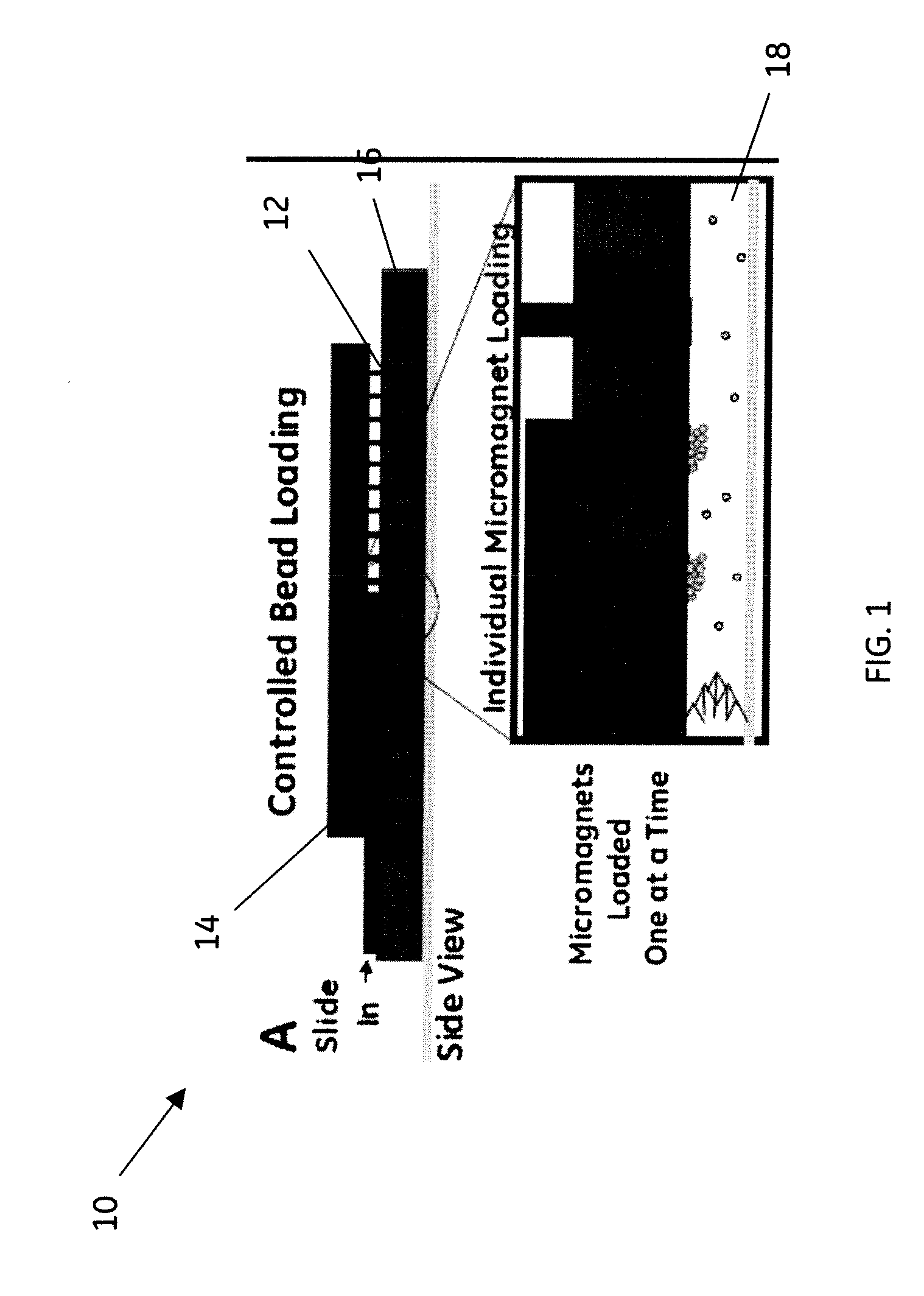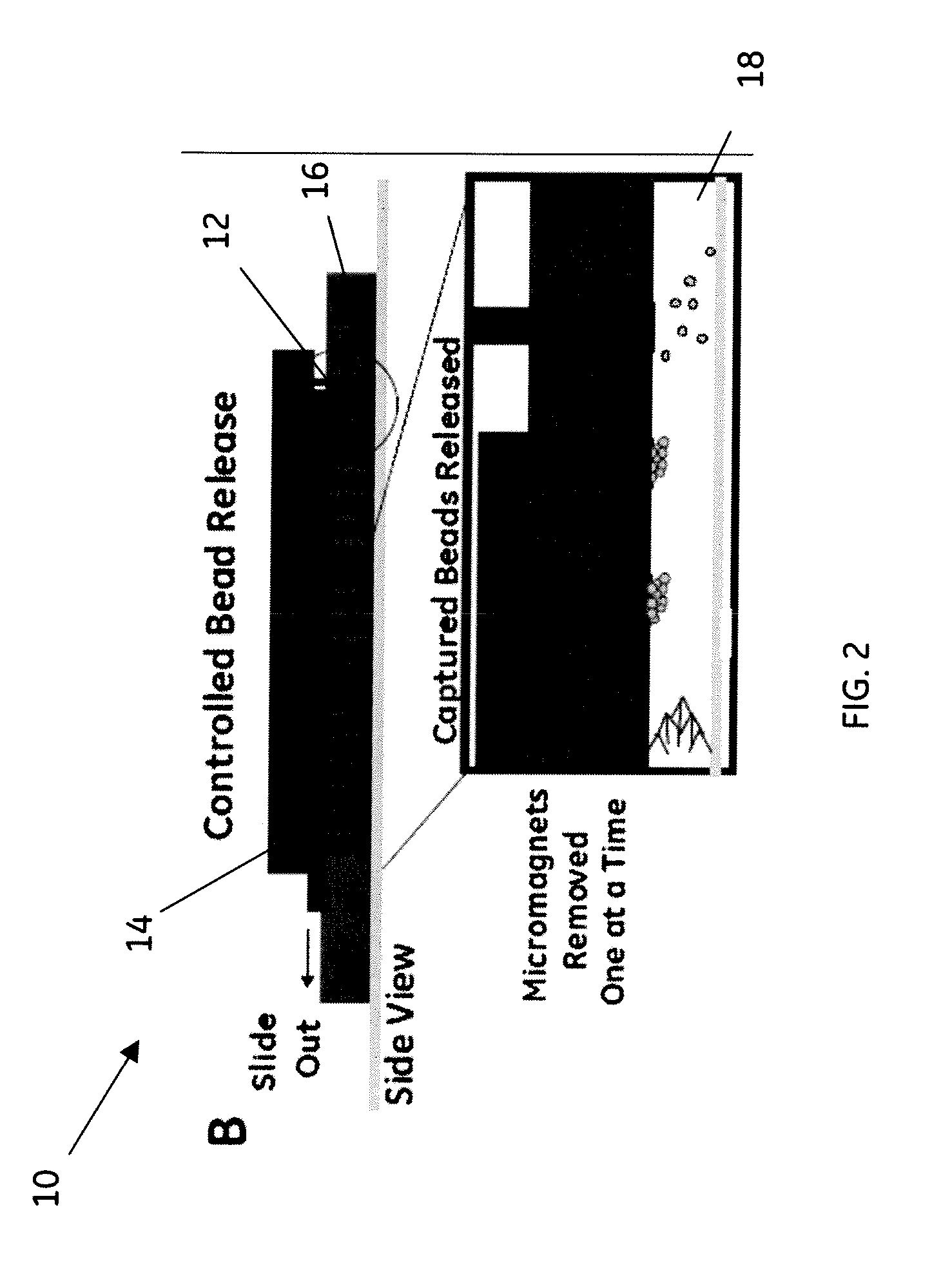Devices and methods for batch processing magnetic bead assays
- Summary
- Abstract
- Description
- Claims
- Application Information
AI Technical Summary
Benefits of technology
Problems solved by technology
Method used
Image
Examples
example
[0043]This example of the method uses the embodiment shown in schematic diagram in FIG. 4 comprising a magnetic array integrated into a microfluidic chip 30 that comprises the two microfluidic modules, sample prep module 32 and cytometer module 34. Sample preparation module 32 comprises a fluidic manifold with five, 100 μL capacity reservoirs, each addressable by a valve.
[0044]The active fluidic components used in this example were made using sterolithography. A fluidic control box was used, which, using both positive and negative pressure, was operated using four separate diaphragm pumps and an array of 16 solenoid valves for controlling the pneumatic valve lines. The sandwich-immunoassay was performed using a continuous flow by washing the pre-functionalized and trapped magnetic beads with each reagent. Carboxy-functionalized Luminex ® microspheres (sets 56, 59, 77, 81, 98) were coupled to Goat-IgG, specific for Shigella, Listeria, Salmonella, E. coli, and Campylobacter. After the...
PUM
 Login to View More
Login to View More Abstract
Description
Claims
Application Information
 Login to View More
Login to View More - R&D Engineer
- R&D Manager
- IP Professional
- Industry Leading Data Capabilities
- Powerful AI technology
- Patent DNA Extraction
Browse by: Latest US Patents, China's latest patents, Technical Efficacy Thesaurus, Application Domain, Technology Topic, Popular Technical Reports.
© 2024 PatSnap. All rights reserved.Legal|Privacy policy|Modern Slavery Act Transparency Statement|Sitemap|About US| Contact US: help@patsnap.com










